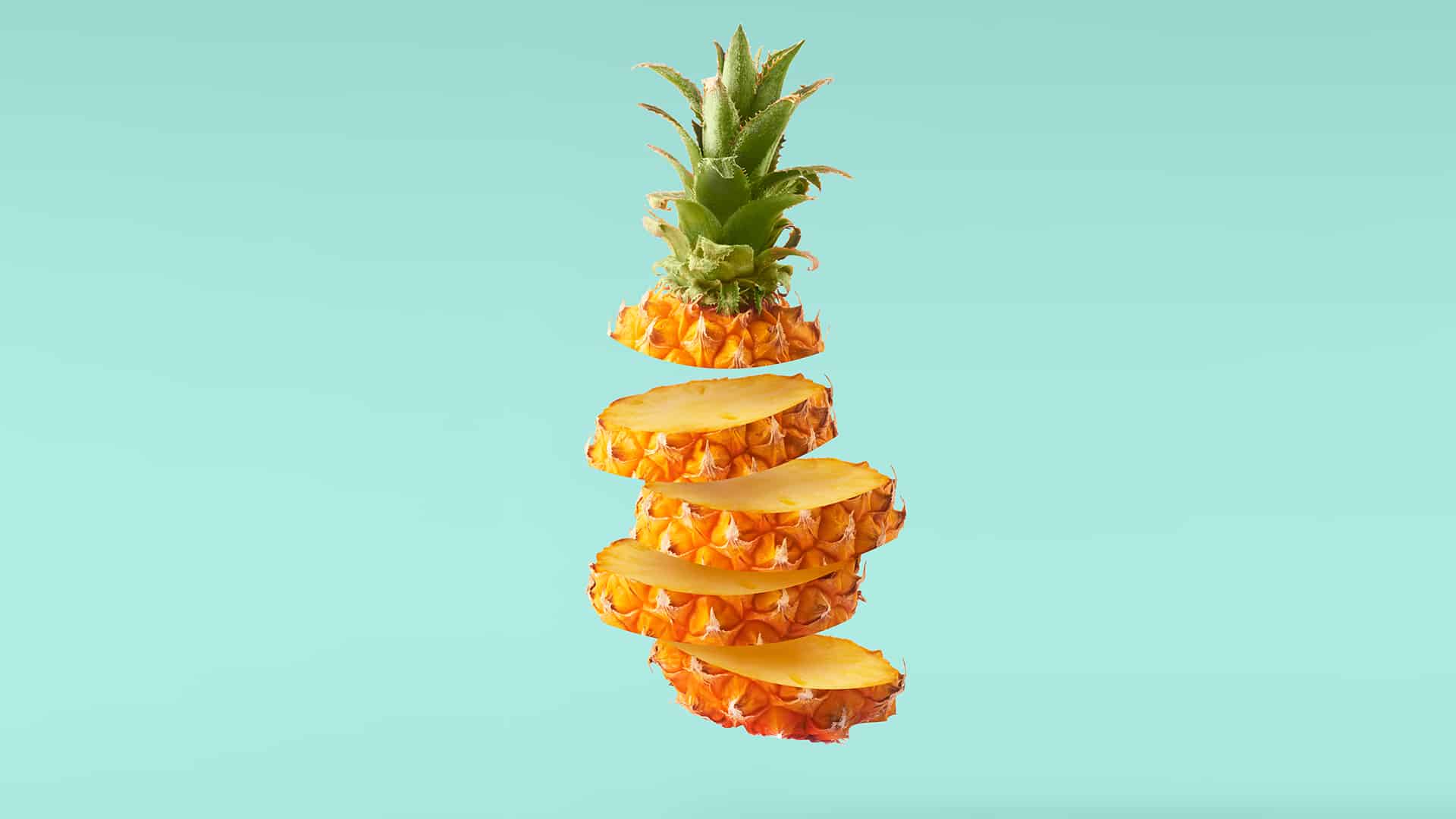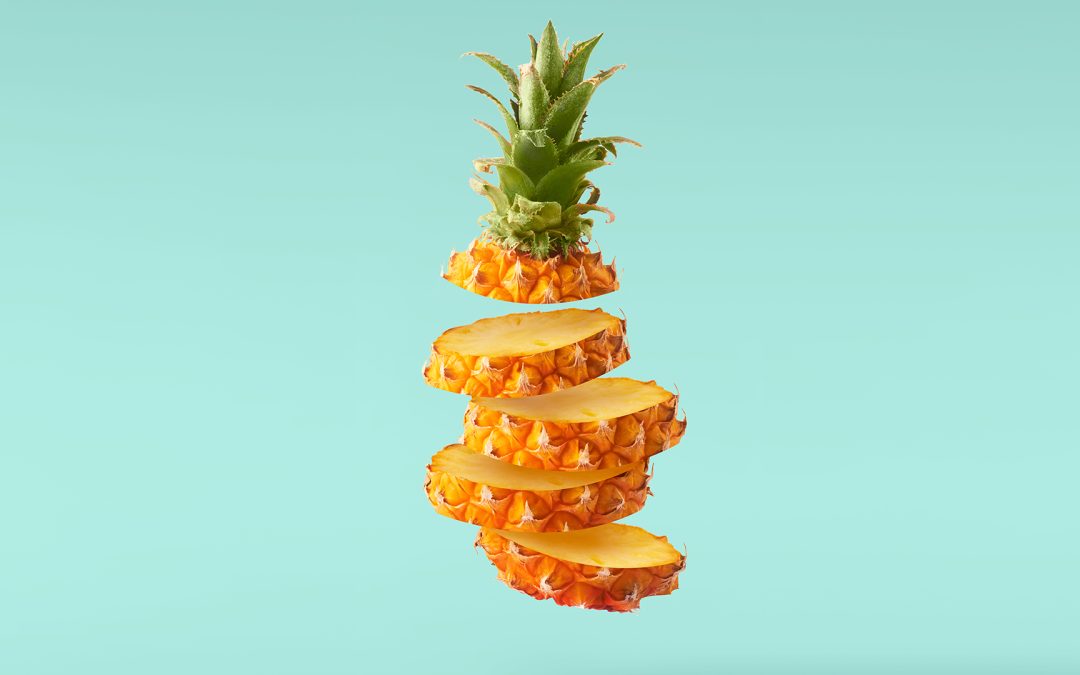
After harvesting, pineapples go through processing depending on the fruit’s intended use and market demands. There are two main options that pineapples go through once harvested. First, they can be sent to the packing plant, where they are packaged and marketed as fresh fruit. The other option sends the pineapples to a processing plant. According to the Food and Fertilizer Technology Center, in the Philippines, the most popular forms of exported processed pineapple are preserved in syrup, juices, pulps and purees, and dried fruit.
Majority of pineapples are processed through canning. It starts by removing the skin and core of the fruit. The first ends (crown and butt) are also removed and collected for further processing. Workers then check for and trim any eyes that remain on the flesh. The pineapple is then blanched or heat-treated just before canning with syrup.
Different parts of the pineapple are further processed into different products: The high-graded main body is cut into crosswise slices or rings; some of the blemished, trimmed parts are turned into chunks; the second ends are used for crushed pineapple; other ends are made into tidbits. Cans are then sealed and go through the autoclave for thermal treatment. Then they are cooled, labeled, boxed, and distributed.
To make pineapple concentrate, the previously removed pineapple first ends are processed. The core, on the other hand, is used to make clarified pineapple juice. These pineapple parts go through extraction, standardization, pasteurization, cooling, freezing, and packing. Vital steps here are the physical separation of solids and pasteurization, which extends the shelf life of the product. The juice can be blended with other ingredients, including other fruit juices, to enhance flavor and create variations. Pineapple juice can be packed in coated cans, plastic-coated cartons, plastic bottles, or multi-laminate products.
Pulp is produced through the process of crushing peeled pineapples. The output is then preserved through thermal treatment or the addition of preservatives. The pulp can be used in making jellies, jams, beverages, and ice cream. Pineapple nectar, on the other hand, is produced by blending the juice with some separated solids from the pulp. These are packaged and marketed similar to pineapple juice.
Other variations to these processes are also done to make other marketable pineapple products. Concentrated frozen pineapple pulp is made by removing at least 50-percent of the water content of the pineapple pulp through thermal treatment. The output goes through concentration and freezing for proper preservation. Aseptic pulp is another product where the pineapple pulp is heat-sterilized and packed without chemicals.
Dried pineapple is produced by eliminating most of the fruit’s water. Pineapple chunks or slices are dehydrated and packaged with a moisture content of only around 5-percent. This product has a long shelf life and can be consumed directly or used in various culinary applications.


Recent Comments